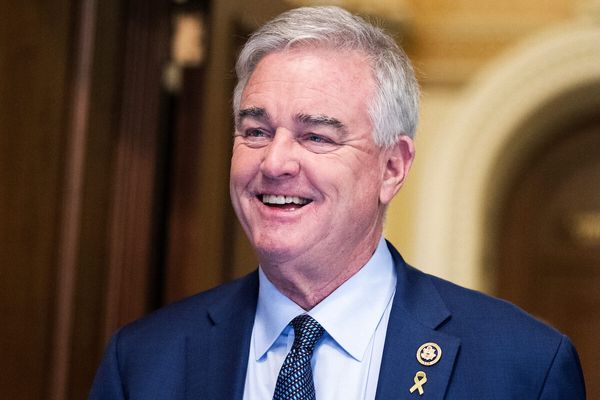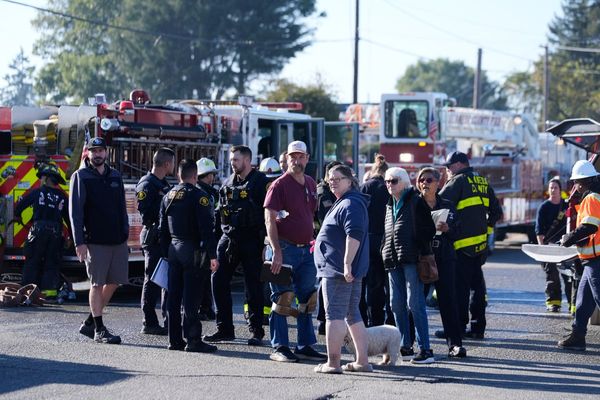
Wildfires have broken out across London as temperatures have risen in this Summer’s fourth heatwave.
Three wildfires broke out in the space of 24 hours at the Wanstead Flats on Monday and Tuesday this week, burning through around four hectares of land.
Firefighters had used a drone to monitor the size of the fire on Monday, and a specialist wildfire response vehicle was sent to the scene to support fire crews.
Two subsequent grass fires broke out within three minutes of each other at Wanstead Flats near Arnold Road in Northolt shortly after 1.30pm on Tuesday afternoon.
The cause of the fires remains unknown.
This comes after the LFB warned of wildfires threatening to destroy public parks and wildlife in London this year.
Two heatwaves in June saw temperatures climb to 34°C at its peak, and scientists predict that oppressive heat will grow more common and worse in the ensuing decades.
London is now in its fourth heatwave of the year, following a third in July which saw temperatures soar across the capital.
According to the Natural Hazards Partnership (NHP) assessment conducted by the Met Office, London is currently at high risk of wildfires.
In July the London Fire Brigade (LFB) conducted drills in London's parks to prepare for the increasing frequency of wildfires.
More than 50 members of LFB, the Met Police, and Royal Parks, the nonprofit organisation in charge of maintaining eight London parks, participated in an exercise in Richmond Park in south-west London.
It was described as a “good opportunity for staff to see how the equipment works and how arduous it is” by Rob Davies of the LFB.
This summer, the LFB and London Mayor Sadiq Khan have committed £90,000 and £40,000, respectively, in wildfire management, including the pilot of four specialised response vehicles.
The LFB is also retraining its 5,000 frontline employees to better respond to the increasing frequency of wildfires.
But which areas are most at risk of wildfires?
Which parts of London are most at risk?
Wildfires tend to take hold in dry areas - the majority of wildfires in the UK occur in grasslands, woodlands, heathlands and moorlands where fires can take hold easily and spread quickly.
The London Fire Brigade issued a warning about the potential for wildfires with higher temperatures hitting the capital in recent weeks.
Fire chiefs said there was a greater risk of grass fires and wildfires following an assessment from the Natural Hazards Partnership.
Just under half of London - 47 per cent - is made up of green spaces, which is where wildfires thrive.
Richmond Park is the largest green space in London, which measures at 2,500 acres.
Hampstead Heath in north London and Victoria Park are also vast green spaces.
Fire chiefs say people using these spaces in heat should “act responsibility” to stop the likelihood of a wildfire breaking out and taking hold.
Why are wildfires in London becoming more common?
It isn’t just London, wildfires are becoming more common around the UK, and a new study has said it is all our own fault.
Human-caused climate change has increased the likelihood of the UK being affected by wildfires sixfold since 2022, new research has found.
Scientists found that rising global temperatures and drier conditions amplified fire risks, particularly in England.
Experts collated from a number of leading organisations including the Met Office, the UK Centre for Ecology & Hydrology (UKCEH), and the University of Exeter found that “rising global temperatures and drier conditions dramatically increased the probability of extreme fire weather.”
The study compared the current climate to a world without greenhouse gas emissions from human activity and looked at how changing weather conditions affected fire spread and intensity.
The study identified England as the most vulnerable UK nation for being affected by wildfires in the future. London will also be affected massively, because the capital will also see the majority of hot weather because of where it lies in England.
Met Office lead author Dr Chantelle Burton said: “The 2022 heatwave wasn’t just record-breaking – it drastically increased the risk of fires, highlighting the growing danger climate change poses to the UK.”
How to prevent them?
Experts say there are measures we can take to lower the risk of a wildfire breaking out.
With the Met Office predicting a greater chance of further heatwaves this summer, the London Fire Brigade issued advice to locals about how to reduce the risk while simultaneously calling to landowners and local authorities to take action now to help protect communities from wildfires.
Measures include cutting back and ploughing grass, especially where it may lie close to homes and buildings.
They also advised people to take care if enjoying BBQs in the hot weather and to make sure that they are taking care when disposing of rubbish.
Assistant Commissioner Goulbourne from the London Fire Brigade said: “If you’re planning to enjoy the weather in a park or other open spaces, please don’t take a disposable BBQ with you.
“They pose a significant fire risk as the heat can be retained for many hours, even after a barbecue has been put out.
“If you’re having a BBQ at home, avoid doing so on a balcony and ensure your BBQ is away from flammable materials like fences and sheds.
“You should also avoid having your BBQ on any decking you may have in your garden.
“It’s also important to make sure that smoking materials are discarded of properly and either dispose of your rubbish in the appropriate bins or take it home with you if none are available.”
People are also advised to not leave bottles or glass in woodland or open spaces as sunlight shining through glass can start fires and to dispose of cigarettes properly.







